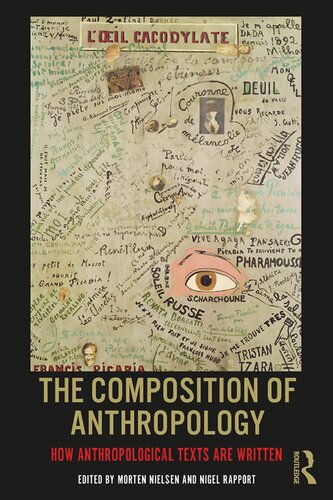

Most ebook files are in PDF format, so you can easily read them using various software such as Foxit Reader or directly on the Google Chrome browser.
Some ebook files are released by publishers in other formats such as .awz, .mobi, .epub, .fb2, etc. You may need to install specific software to read these formats on mobile/PC, such as Calibre.
Please read the tutorial at this link. https://ebooknice.com/page/post?id=faq
We offer FREE conversion to the popular formats you request; however, this may take some time. Therefore, right after payment, please email us, and we will try to provide the service as quickly as possible.
For some exceptional file formats or broken links (if any), please refrain from opening any disputes. Instead, email us first, and we will try to assist within a maximum of 6 hours.
EbookNice Team

Status:
Available4.7
37 reviews
ISBN 10: 1138208124
ISBN 13: 9781138208124
Author: Morten Nielsen, Nigel Rapport
How do anthropologists write their texts? What is the nature of creativity in the discipline of anthropology? This book follows anthropologists into spaces where words, ideas and arguments take shape and explores the steps in a creative process. In a unique examination of how texts come to be composed, the editors bring together a distinguished group of anthropologists who offer valuable insight into their writing habits. These reflexive glimpses into personal creativity reveal not only the processes by which theory and ethnography come, in particular cases, to be represented on the page but also supply examples that students may follow or adapt.
1 The life of concepts and how they speak to experience
Commentary 1
TEXT
Commentary 2
Commentary 3
Commentary 4
Notes
References
2 Ten preludes to a preface
Commentary: 1
Pre-texts: Ten preludes
Text: Finding form
Commentary: 2
References
3 Writing against conclusion
TEXT
COMMENTARY
Note
References
4 Composing texts and the composition of uprisings: Notes on writing the postcolonial political
TEXT
Text messages, unrest and trans-African political fears
The rhizome of the strikes
‘Now they are afraid of us’: The strikes as exuberant and unsettling
COMMENTARY
Presences of the present, or the messiness of field and time
TEXT: Aims, audiences and authors in present retrospect
Postscript, again
Notes
References
5 Public ritual in Mauritius
TEXT
Commentary
References
6 Writing Whalsay: Reflections on how, why, and for who anthropologists write
TEXT
COMMENTARY
7 Writing a cosmopolitan anthropology in recognition of Anyone
TEXT
COMMENTARY
References
8 Diversifying from within: Diaspora writings in Sweden 122
TEXT
COMMENTARY 1: The making of an anthropological writer
COMMENTARY 2: Out of desire and technique springs creativity
COMMENTARY 3: The genealogy of the essay
Notes
References
9 Dialogic aesthetics: Notes and nodes in analogical software coding
TEXT
COMMENTARY
Note
References
10 Composing American stiob
Commentary and text
References
11 In the workshop: Anthropology in a collaborative zone of inquiry
Commentary 1
TEXT 1: Attractiveness | accentuation in sex work
TEXT 2: Gesture in dying
TEXT 3: Late style in the arts and anthropology
Commentary 2
TEXT 4: Paul Klee and late style
TEXT 5: Endings
TEXT 6: Plasticity and object bodies
Commentary 3
Note
References
EPILOGUE Writing the human: Anthropological accounts as generic fragments
A chimera
‘You must go on. I can’t go on. I’ll go on.’
Generic fragments
Literary insight
The process of anthropological composition
Tags: Morten Nielsen, Nigel Rapport, Anthropology, Anthropological